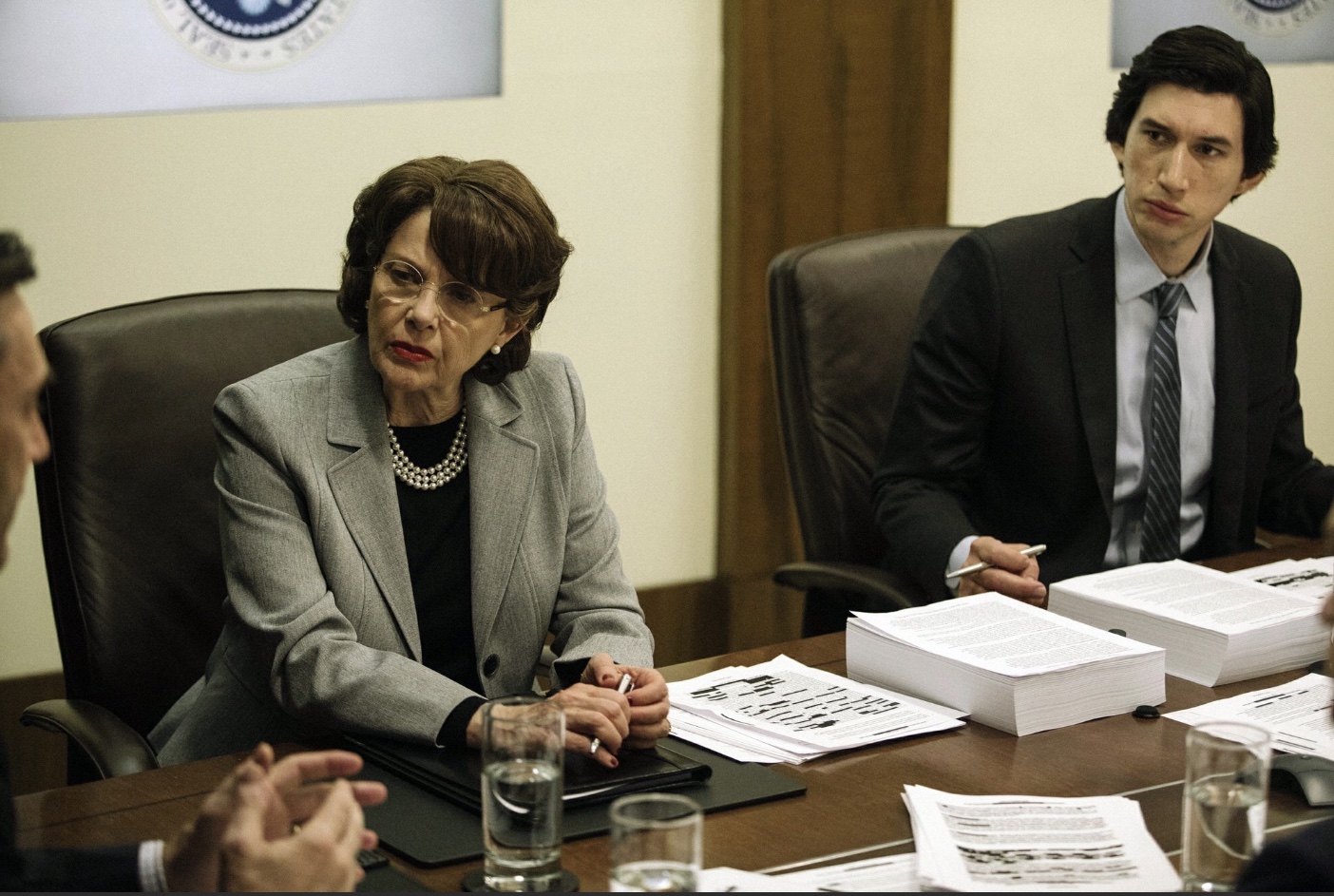Let’s get confirmation biases out of the way straight off: The Report is a political southpaw of a film. But it clearly worked meticulously on the pitch.
Of all the statistics involving the Senate Select Committee on Intelligence report on the CIA’s post–9/11 detention and interrogation program — better known as the “Torture Report” — let’s focus on this for a second: It had 38,000 footnotes.
This mammoth piece of work, which ran 6,700 pages and took years of toil by Senate staffer Daniel L. Jones, examining millions of classified documents in a windowless basement, was never fully released; only a 525–page summary was published, in 2014. Well, now it’s getting its own Hollywood film, at least. It seems only fair, in a cosmic sense.
Still, The Report, written and directed with brisk efficiency and a clear sense of outrage by Scott Z. Burns, does its level best to make us understand the importance of this document, which at once revealed the extent of CIA “enhanced interrogation” in the wake of 9/11 and showed that it didn’t work — discrediting, along the way, the idea that torture led to the capture of Osama bin Laden. And yes, the film takes more intellectual energy and patience from the viewer than most. And that’s fine. It deserves the effort.
In that regard, The Report (the missing word “Torture” is cleverly “redacted” in the film’s graphics) should be greatly helped by the fact that it happens to star one of the most popular actors in Hollywood.
Does it suddenly seem like Adam Driver is in everything? Already, Oscar predictions are circulating for his performance in Noah Baumbach’s Marriage Story, an intimate meditation on divorce. Soon, he reprises his role as Kylo Ren in the Star Wars franchise. He also scorched the Broadway stage earlier this year in Burn This, earning a Tony nod.
All those roles presented radically different challenges than Driver’s task here. This is the story of a report, not a man. No attempt is made to explore Jones’ psyche. We never see him at home, with family or with friends. We barely even see him outside.
Still, with a controlled intensity that gradually increases, Driver makes it work. His partner here is a terrific Annette Bening as Sen. Dianne Feinstein, his boss. Only an actress as precise and restrained as Bening could capture the no–nonsense persona of Feinstein, the California Democrat who assigned Jones the report, without ever seeming to imitate her — although the coiffed hair and the glasses are pretty on–point.
They also include waterboarding, the technique of simulated drowning that one secret informant who approaches Jones — a physician’s aide — tells him came pretty close to the actual thing. We also see detainees stripped and chained to floors. One of them dies, after having freezing water poured onto him. Driver, as Jones, rails: “They (expletive) killed a guy, and nobody was held accountable?”
It’s important to note here that many will see The Report as a cinematic rebuttal, seven years later, to Zero Dark Thirty, Kathryn Bigelow’s Oscar–nominated film that implied a connection between CIA torture and intelligence that led to the bin Laden raid. They will certainly not miss the brief but pointed reference to that movie, a quick mention from a TV screen that provides the film with its slight levity. 
The Report is not nearly as action–packed as Zero Dark Thirty, and it doesn’t even have the dark–garage scenes like those with Deep Throat in All the President’s Men — except one quick exchange with an informant. 
But the issues it addresses are, to say the least, crucial ones, and even though it trusts its audience to soldier through some dense material, the audience should repay that trust. Here’s hoping it will.



